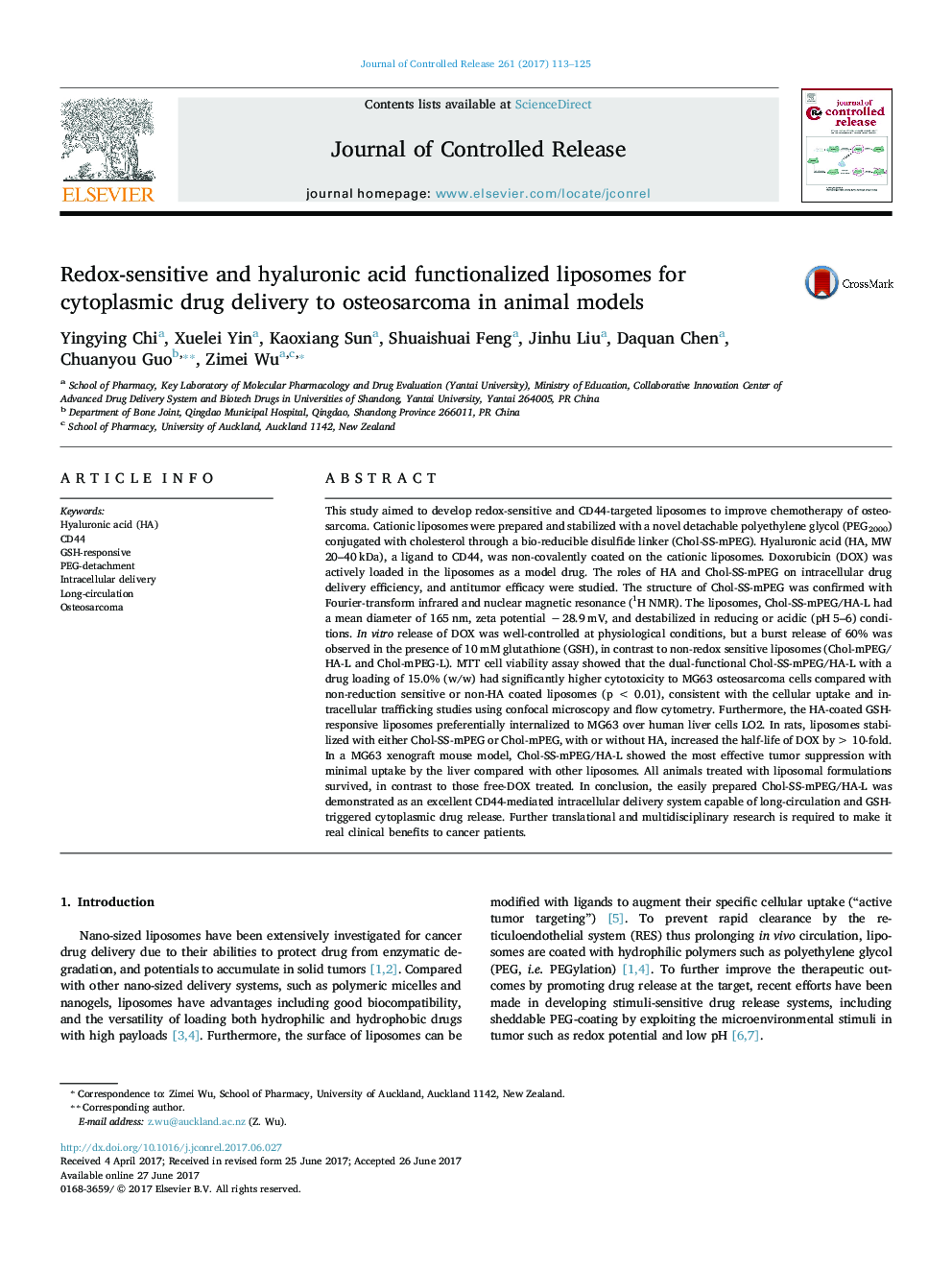| Article ID | Journal | Published Year | Pages | File Type |
|---|---|---|---|---|
| 5433427 | Journal of Controlled Release | 2017 | 13 Pages |
This study aimed to develop redox-sensitive and CD44-targeted liposomes to improve chemotherapy of osteosarcoma. Cationic liposomes were prepared and stabilized with a novel detachable polyethylene glycol (PEG2000) conjugated with cholesterol through a bio-reducible disulfide linker (Chol-SS-mPEG). Hyaluronic acid (HA, MW 20-40 kDa), a ligand to CD44, was non-covalently coated on the cationic liposomes. Doxorubicin (DOX) was actively loaded in the liposomes as a model drug. The roles of HA and Chol-SS-mPEG on intracellular drug delivery efficiency, and antitumor efficacy were studied. The structure of Chol-SS-mPEG was confirmed with Fourier-transform infrared and nuclear magnetic resonance (1H NMR). The liposomes, Chol-SS-mPEG/HA-L had a mean diameter of 165 nm, zeta potential â 28.9 mV, and destabilized in reducing or acidic (pH 5-6) conditions. In vitro release of DOX was well-controlled at physiological conditions, but a burst release of 60% was observed in the presence of 10 mM glutathione (GSH), in contrast to non-redox sensitive liposomes (Chol-mPEG/HA-L and Chol-mPEG-L). MTT cell viability assay showed that the dual-functional Chol-SS-mPEG/HA-L with a drug loading of 15.0% (w/w) had significantly higher cytotoxicity to MG63 osteosarcoma cells compared with non-reduction sensitive or non-HA coated liposomes (p < 0.01), consistent with the cellular uptake and intracellular trafficking studies using confocal microscopy and flow cytometry. Furthermore, the HA-coated GSH-responsive liposomes preferentially internalized to MG63 over human liver cells LO2. In rats, liposomes stabilized with either Chol-SS-mPEG or Chol-mPEG, with or without HA, increased the half-life of DOX by > 10-fold. In a MG63 xenograft mouse model, Chol-SS-mPEG/HA-L showed the most effective tumor suppression with minimal uptake by the liver compared with other liposomes. All animals treated with liposomal formulations survived, in contrast to those free-DOX treated. In conclusion, the easily prepared Chol-SS-mPEG/HA-L was demonstrated as an excellent CD44-mediated intracellular delivery system capable of long-circulation and GSH-triggered cytoplasmic drug release. Further translational and multidisciplinary research is required to make it real clinical benefits to cancer patients.
Graphical abstractDownload high-res image (98KB)Download full-size image
